NextGenDC/Speakers
Guest Speakers – Spring 2018
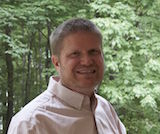 Data centers seem to be a particular focus of complexity; overlays proliferate on top of already complex underlays in response to application requirements. How can network engineers fight this tide of complexity? One option is automation; another is centralized control planes.
Data centers seem to be a particular focus of complexity; overlays proliferate on top of already complex underlays in response to application requirements. How can network engineers fight this tide of complexity? One option is automation; another is centralized control planes.
Russ White started the 2018 course with a presentation on a topic that should be mandatory for anyone claiming to be a network designer or architect: understanding and managing network complexity.
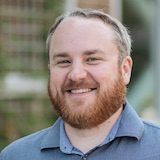 As virtualization has become fairly mainstream throughout data centers, the opportunity presents itself for engineers across different silos to work together to build some fantastic designs.
As virtualization has become fairly mainstream throughout data centers, the opportunity presents itself for engineers across different silos to work together to build some fantastic designs.
Chris Wahl in his presentation distilled over a decade of virtualization architecture and engineering into topics covering the major hypervisor platforms, combating virtual sprawl and zombies, dealing with cluster constructing and management, and supporting high performance workloads and their many quirks.
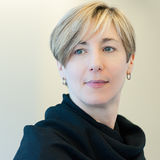 While many security professionals have a solid understanding of how to identify vulnerabilities in traditional physical infrastructure or applications, they often don’t grasp modern DevOps environments that include microservices, FaaS and IaaS. This leads to gaps, inefficiencies and a flawed program. Instead, security teams often distrust and deride the DevOps model that seeks to deploy at speed and scale, creating a narrative that does nothing to address the business need.
While many security professionals have a solid understanding of how to identify vulnerabilities in traditional physical infrastructure or applications, they often don’t grasp modern DevOps environments that include microservices, FaaS and IaaS. This leads to gaps, inefficiencies and a flawed program. Instead, security teams often distrust and deride the DevOps model that seeks to deploy at speed and scale, creating a narrative that does nothing to address the business need.
If organizations really want to deliver secure services, Information Security professionals have to meet DevOps and CloudOps teams where they are, by understanding how to embed security into their processes. This session by Michele Chubirka will help you shift the conversation – you’ll learn some DevOps concepts, the challenges faced in a continuous delivery environment and discover how to get Dev, Ops, and Security teams aligned and focused on a singular goal.
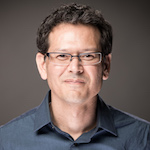 Imagine you're running an on-premises data center and you've been informed that your company is moving to cloud and you get to do the work, yesterday... Don't panic - there's help on the way. This session by Ed Horley is a no nonsense road map of how to survive the next few months and figure out what makes sense to move, the common challenges you will run into and some options on how to address them.
Imagine you're running an on-premises data center and you've been informed that your company is moving to cloud and you get to do the work, yesterday... Don't panic - there's help on the way. This session by Ed Horley is a no nonsense road map of how to survive the next few months and figure out what makes sense to move, the common challenges you will run into and some options on how to address them.
Ed covered the basics of AWS (the leading public cloud provider), the services they provide, and the decisions you will have to make to operate effectively in AWS. He also gave guidelines on what to continue to operate on premises, what to switch to cloud, and the fun you will have running both at the same time.
Guest Speakers – Spring 2017
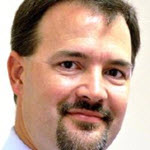 Open-source software is becoming a vital part of data center infrastructure. In this section, Scott Lowe described the impact of open-source on data center design and data center infrastructure, touching on a variety of subjects ranging from Linux & Linux networking to OpenStack and Docker.
Open-source software is becoming a vital part of data center infrastructure. In this section, Scott Lowe described the impact of open-source on data center design and data center infrastructure, touching on a variety of subjects ranging from Linux & Linux networking to OpenStack and Docker.
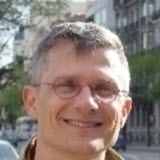 UBS (one of the largest global banks) managed an amazing feat: they rolled out 24 new data centers in 30 months. In his presentation, Thomas Wacker described how UBS solved that challenge by fully embracing automation for all phases of data center network rebuild, including validation and documentation.
UBS (one of the largest global banks) managed an amazing feat: they rolled out 24 new data centers in 30 months. In his presentation, Thomas Wacker described how UBS solved that challenge by fully embracing automation for all phases of data center network rebuild, including validation and documentation.
He started with prerequisites and key objectives, laid out the architecture, showcased the toolchain UBS was using at that time, and explained the phases of build, test, documentation and ongoing operations. In the conclusion, he detailed the benefits of UBS approach, their immediate goals, and his view on how automation will keep changing the networking industry.
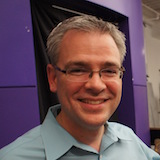 Containers (including Docker and Kubernettes) are the new buzzword in application development world, so you must understand what their impact on data center infrastructure is.
Containers (including Docker and Kubernettes) are the new buzzword in application development world, so you must understand what their impact on data center infrastructure is.
Stephen Foskett focused on essentials of containerization of enterprise applications, answering questions like "what are containers?" and "how will they affect enterprise IT?" Stephen addressed both the technical and architectural questions, discussing which applications are expected to be containerized, the benefits and costs, and what it means for IT operations.
 Regardless of what you think about the role of IPv6, its usage is growing, and eventually, you'll have to bite the bullet in introduce another protocol in your networking infrastructure.
Regardless of what you think about the role of IPv6, its usage is growing, and eventually, you'll have to bite the bullet in introduce another protocol in your networking infrastructure.
Ed Horley (who was deploying IPv6 in data environments for years) gave us some guidelines and described lessons learned while deploying IPv6 within data centers, and what you need to consider before you start your IPv6 journey.
 Let's assume you want to increase the availability of your services by moving parts of them into the cloud or doing some sort of active/standby deployment between your DC and the cloud. Now you have to deal with your (C)ISO and his/her usual concerns as well as variety of articles on tech sites stating that "security is the biggest challenge of cloud adoption". How real are those concerns?
Let's assume you want to increase the availability of your services by moving parts of them into the cloud or doing some sort of active/standby deployment between your DC and the cloud. Now you have to deal with your (C)ISO and his/her usual concerns as well as variety of articles on tech sites stating that "security is the biggest challenge of cloud adoption". How real are those concerns?
Matthias Luft broke them into categories (such as isolation failures, cloud outages, or compliance issues), looked at incidents and vulnerabilities from the past, and explained what we can do about those in our cloud strategy.
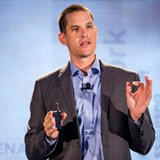
 The Spring 2017 course concluded with an interactive panel discussion with Andrew Lerner and Simon Richard from Gartner. We discussed these topics: Current State of the Enterprise Networking; What happened to SDN (and brite-boxes); Premium people versus premium products; Network Incrementalism and other worst practices; Rethinking Network Downtime; The WAN is Cool again (SD-WAN, vCPE) and Emerging Topics: Container Networking and Intent-based Networking.
The Spring 2017 course concluded with an interactive panel discussion with Andrew Lerner and Simon Richard from Gartner. We discussed these topics: Current State of the Enterprise Networking; What happened to SDN (and brite-boxes); Premium people versus premium products; Network Incrementalism and other worst practices; Rethinking Network Downtime; The WAN is Cool again (SD-WAN, vCPE) and Emerging Topics: Container Networking and Intent-based Networking.
Guest Speakers – Autumn 2016
 It doesn't help if you have the best ideas in the world if you can't present them, so I asked Marjan Bradeško (NIL Data Communications) who spent decades developing and delivering high-end training to explain how to create a great presentation. In his talk he address questions like how to make sure people see the content no matter the size of the screen or the distance from the projection. How many "slides" to create for the allotted time slot? How to let your audience know what to expect? How to summarize the key points? How to deal with complex drawings? Or change boring bullets into something to remember! Is structured presentation mandatory or does it hinder your creativity?
It doesn't help if you have the best ideas in the world if you can't present them, so I asked Marjan Bradeško (NIL Data Communications) who spent decades developing and delivering high-end training to explain how to create a great presentation. In his talk he address questions like how to make sure people see the content no matter the size of the screen or the distance from the projection. How many "slides" to create for the allotted time slot? How to let your audience know what to expect? How to summarize the key points? How to deal with complex drawings? Or change boring bullets into something to remember! Is structured presentation mandatory or does it hinder your creativity?
 Elisa Jasinska did a great overview on how to approach your automation and orchestration strategy in a datacenter environment. She described the separation of provisioning tasks from orchestration or ongoing management, and provided examples and tools to cope with each of them.
Elisa Jasinska did a great overview on how to approach your automation and orchestration strategy in a datacenter environment. She described the separation of provisioning tasks from orchestration or ongoing management, and provided examples and tools to cope with each of them.
She started her presentation with a brief description of typical microservices-based network automation architecture. Next she listed the services and components you might need in your automation/orchestration solution, including single-source-of-truth database, templating system, device access, telemetry data collection systems and monitoring systems. In the final part of the presentation you'll find a few guidelines on automation/orchestration system design.
 Russ White (LinkedIn) described the principles of disaggregation and white box switching data center solutions, the problem space and various open-source solutions, including their positive and negative attributes.
Russ White (LinkedIn) described the principles of disaggregation and white box switching data center solutions, the problem space and various open-source solutions, including their positive and negative attributes.
 Howard Marks a renowned storage guru, started his presentation with a brief introduction of traditional storage technology including: performance metrics, storage systems, RAID data redundancy, storage protocols. The core of his presentation focused on modern storage concepts including object storage, software-defined storage, scale-out architectures, erasure coding, the impact of flash storage, and hyperconverged infrastructure.
Howard Marks a renowned storage guru, started his presentation with a brief introduction of traditional storage technology including: performance metrics, storage systems, RAID data redundancy, storage protocols. The core of his presentation focused on modern storage concepts including object storage, software-defined storage, scale-out architectures, erasure coding, the impact of flash storage, and hyperconverged infrastructure.
He concluded with a plethora of interesting topics we rarely hear about in enough details including snapshots, storage QoS, per-VM storage services and VMware vVols, and various storage replication mechanisms.
 Networking and virtualization vendors keep proposing crazier and crazier ideas that are supposed to allow you to run active-active data centers without touching the applicatino architecture. Not surprisingly, most of them fail disastrously under the right failure conditions.
Networking and virtualization vendors keep proposing crazier and crazier ideas that are supposed to allow you to run active-active data centers without touching the applicatino architecture. Not surprisingly, most of them fail disastrously under the right failure conditions.
If you want to have a highly-available application, there's simply no substitute for good design including global and local load balancing. In his presentation, Ethan Banks (PacketPushers.net) described the architecture he used when running multiple data centers for a large credit card payment processor, and lessons learned while operating them.
 Can you combine VMware NSX with Cisco Nexus 9000 switches? Should you run EVPN or ACI on the physical switches? What design guidelines should you follow? What are the potential gotchas?
Can you combine VMware NSX with Cisco Nexus 9000 switches? Should you run EVPN or ACI on the physical switches? What design guidelines should you follow? What are the potential gotchas?
In his presentation Mitja Robas answered all these questions, and described a few of the lessons learned while building a production NSX+EVPN environment.
